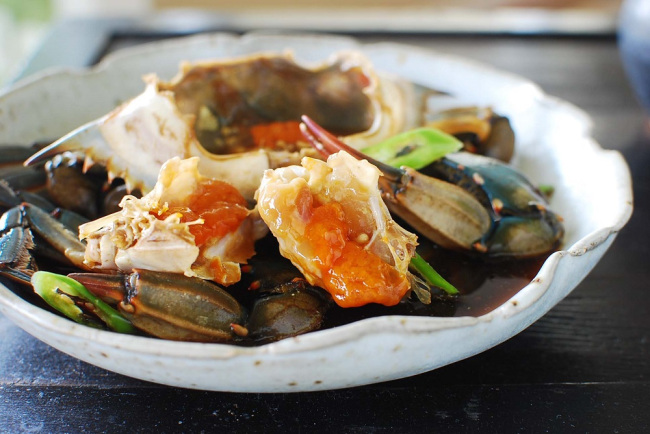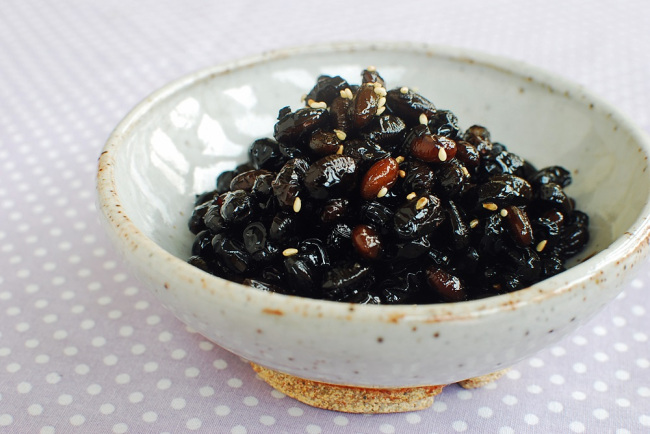 |
| Ganjang gejang (raw crabs marinated in soy sauce) (Korean Bapsang) |
The brine should be flavorful, but not overpowering or too salty. Female crabs are preferred for making gejang, but you can also use male crabs, especially in the fall when they are fat and bountiful. As is the case with the consumption of any raw seafood, be sure to use only the freshest crabs.
Gejang is eaten with a bowl of rice. Koreans even refer to this dish as a “rice thief.” Your bowl of rice will be gone in no time as you enjoy sucking the flavor-packed crab meat out of the shell. Be sure to leave a spoon or two of rice to mix with the roe and tomalley in the top shell.
Ingredients:
● 5 medium fresh blue crabs or kkotge
For the brine:
● 2 cups soy sauce
● 1/2 cup rice wine (or mirin)
● 6 cups water
● 3 tablespoons sugar (adjust to taste)
● 1/2 medium onion, roughly sliced
● 5-6 plump garlic cloves
● 3-4 thin ginger slices (about 1 inch around)
● 1 piece dried kelp, dashima (about 5-inch square)
● 1 small apple, roughly sliced (or 1/2 small Korean/Asian pear)
● 1 bay leaf
● 1/2 teaspoon whole black peppers
● 2 to 3 dried red chili peppers
For garnish:
● 2-3 green and/or red chili peppers, thinly sliced
● A few thin onion slices
● 3-4 thin lemon slices
Put the live crabs in the freezer for an hour or two (longer is fine as well), unless you are comfortable with handling live crabs.
Meanwhile, bring all the marinade ingredients to a boil over medium-high heat. Reduce the heat to medium-low, and continue to boil, covered, for about 20 minutes. Remove the kelp after about 10 minutes of boiling. Strain the brine. Discard the fruit and vegetables. Cool completely, and then refrigerate until ready to use.
Clean each crab thoroughly with a kitchen brush. Drain well in a colander in the fridge.
Place the crabs in an airtight container or jar. Add the chili pepper, onion and lemon slices. Pour the brine over the crabs. Make sure all the crabs are submerged. Weigh them down, if necessary, with a small bowl or plate that fits inside the container. Refrigerate.
After one day, strain the brine into a pot (and put the crabs back in the fridge). Bring the brine to a boil over medium heat, and boil for 3 to 4 minutes. Wait for the brine to completely cool, and then pour it back over the crabs. You can skip this process, but it enhances the flavor of the brine and helps the crabs to last longer.
The crabs are ready to eat after two to three days of preparation. Separate the top shell and break the body in half before serving. Use a crab or nut cracker to break the claws.
If left in the brine for too long, the crabs can get too salty, and the meat will start to dissolve. It’s best eaten within three to four days of preparation. After that, individually freeze any leftover crabs with a little bit of the brine in a freezer bag. Thaw in the fridge for a few hours before serving.
The crab infused leftover brine can be reused to marinate meat or as a dipping or seasoning sauce. Boil it for a few minutes and cool before saving it in the fridge for later use.




